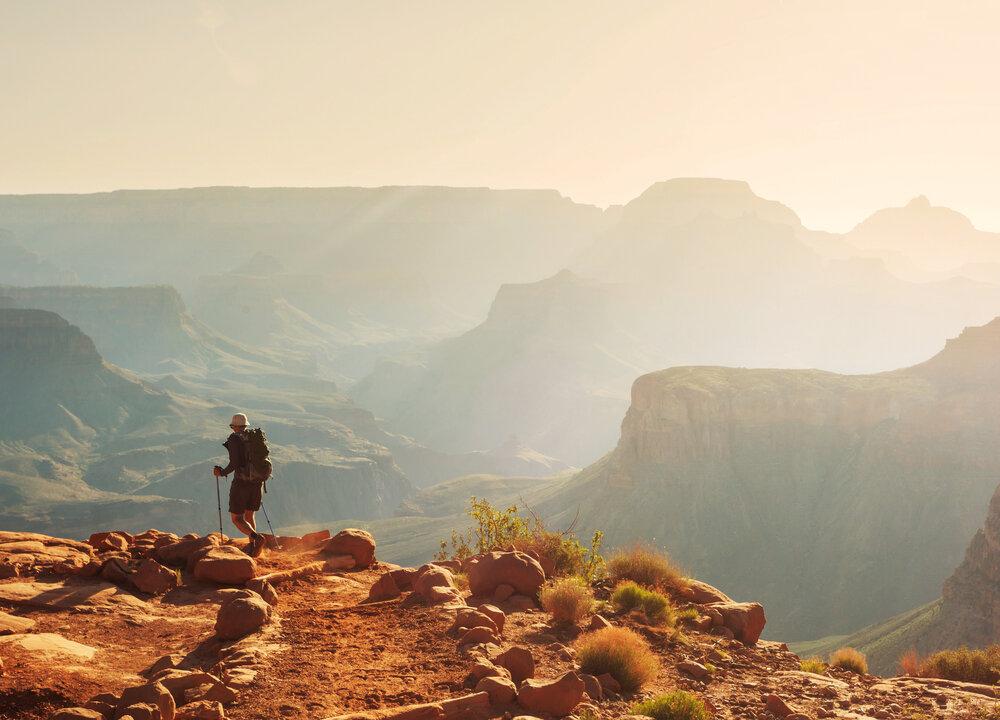The far rim is so distant, it seems to shimmer in an entirely different reality, another world. A place separated, north from south, by a chasm. Normally, canyons are deep and narrow, slender enough that the floor remains in an almost-perpetual shadow, a little silvery sliver of river snaking at the bottom, a fleeting flash of sun reflecting back from that winding thread.
But the Grand Canyon is something else entirely. Riding in a helicopter from the South Rim, the scrubby forest rooted in the red soil of northern Arizona falls away, and below, just an abyss. The Colorado, one of the mighty rivers of the West, flows blue when it’s not frothing white. The extreme depth lays bare layers upon layers of rock, alternating shades of brown, red, and orange. The size of it is hard to grasp.





